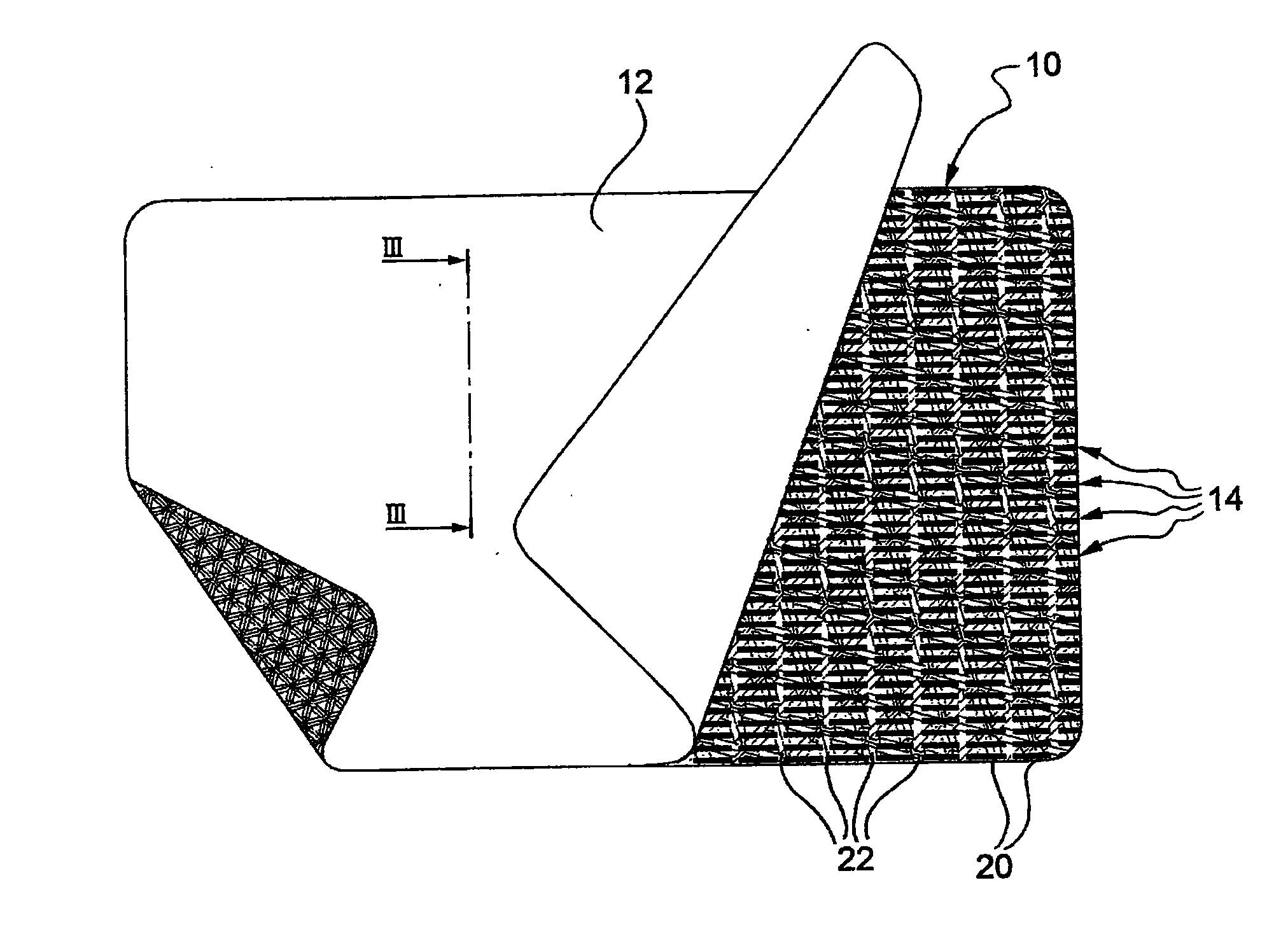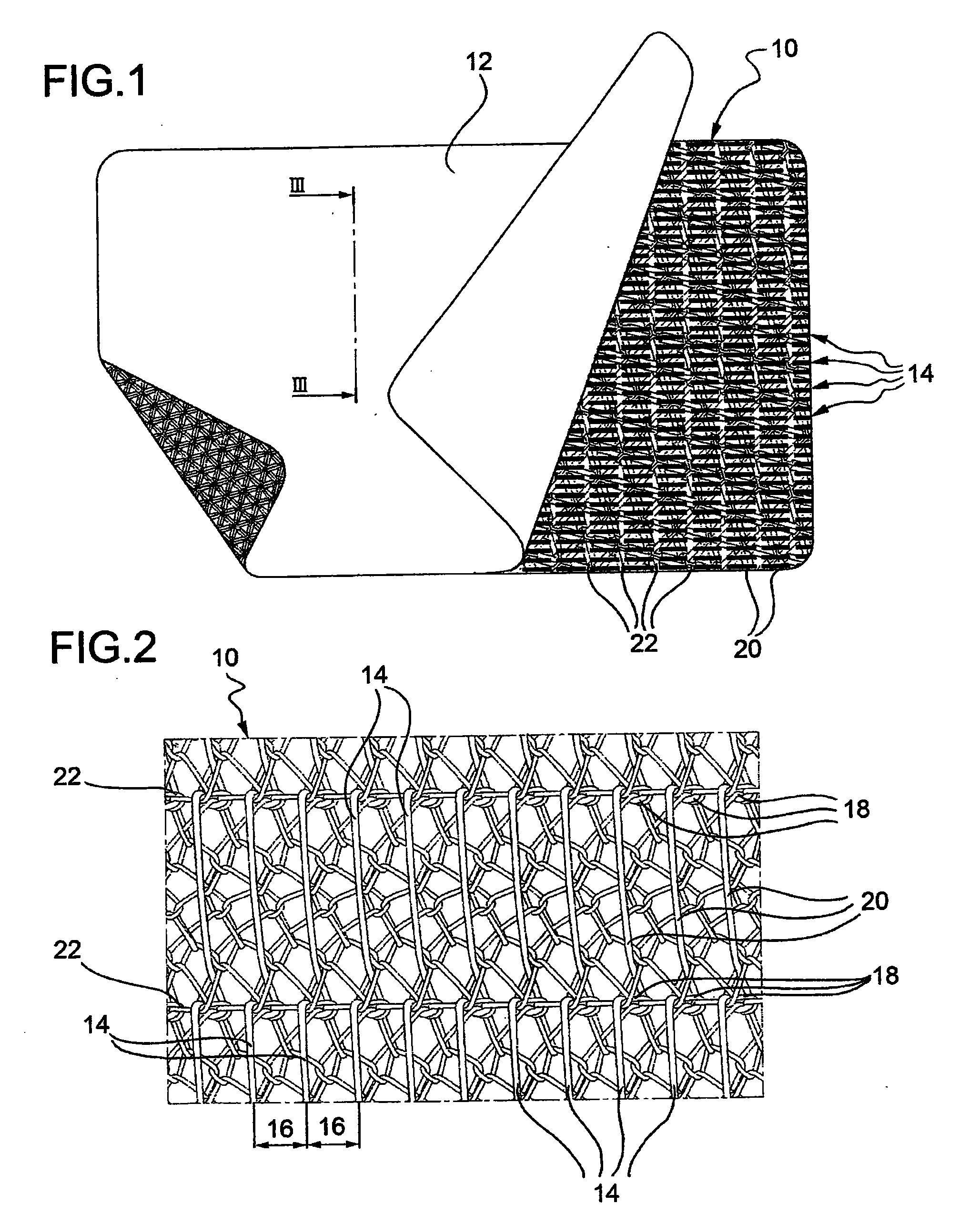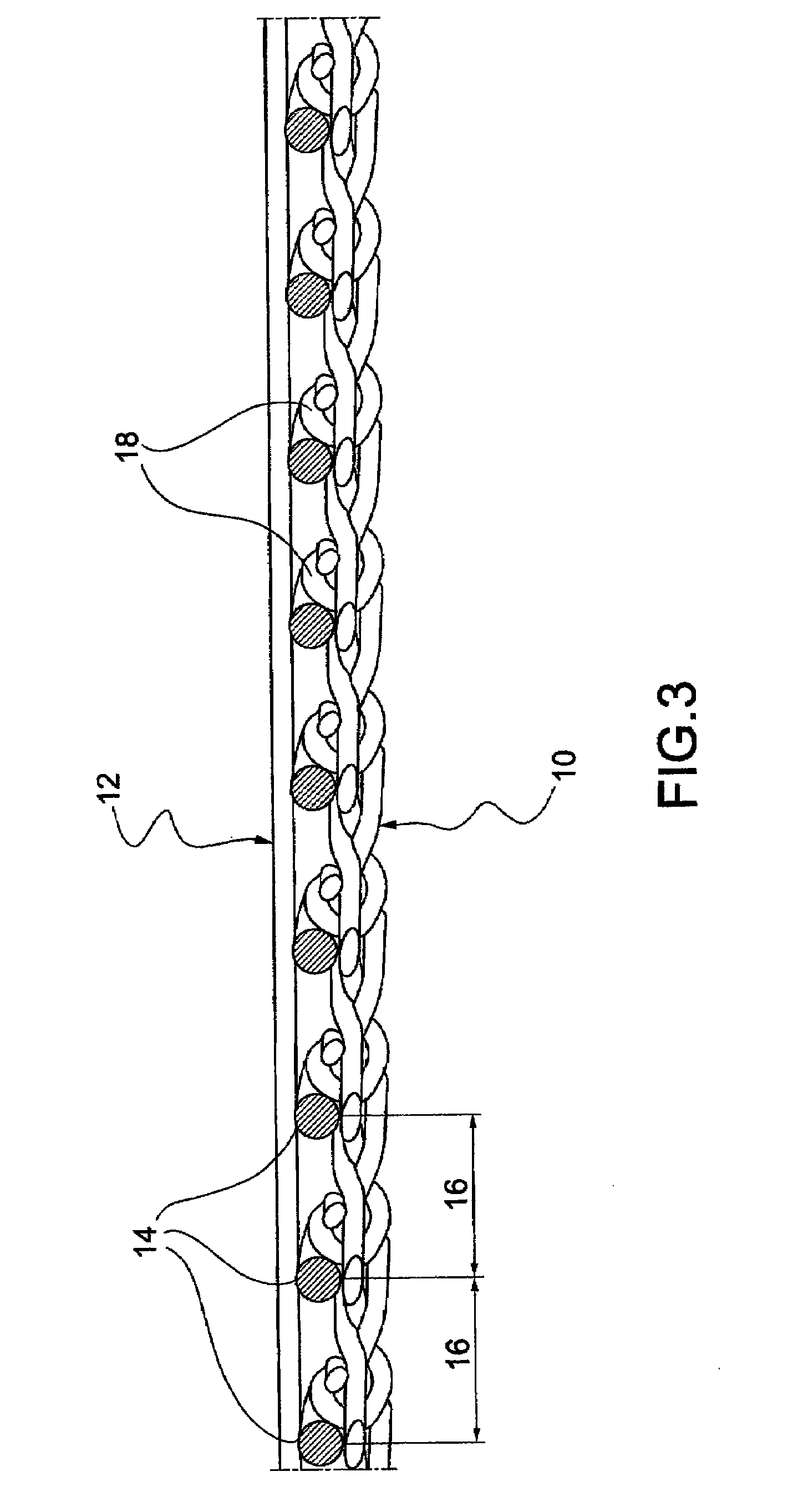Double layer surgical prosthesis to repair soft tissue
a soft tissue and prosthesis technology, applied in the field of surgical prosthesis, can solve the problems of limiting the possibility of location, serious drawback of prior art mesh, discomfort and pain of patients, etc., and achieve the effects of reducing weight, reducing thickness, and small dimensions
- Summary
- Abstract
- Description
- Claims
- Application Information
AI Technical Summary
Benefits of technology
Problems solved by technology
Method used
Image
Examples
Embodiment Construction
[0018]FIG. 1 illustrates a surgical prosthesis for the repair of soft tissues, in particular for the treatment of hernias and / or laparoceles via an intraperitoneal route of the present invention A mesh 10 is made up of filaments of non-resorbable and biocompatible synthetic polymer material having interstices which permit tissue growth and a sheet 12 of polymer material having barrier properties and low adhesion to sensitive body organs and tissues. Sheet 12 is superimposed on mesh 10 and joined to it through a plurality of joining filaments 14 to form a stratified structure.
[0019]The material used for sheet 12 can be synthetic or natural, resorbable or not resorbable, for example expanded polytetrafluoroethylene, polyhuretane, collagen, polyglactin (PGLA), poly-l-lactide acid (PLLA), polydioxanone / poly-p-dioxanone (PDO or PDS), polycaprolacton or polyglecaprone. The material used for mesh 10, and for joining filaments 14, can be, for example, a monofilament polypropylene polyester,...
PUM
 Login to View More
Login to View More Abstract
Description
Claims
Application Information
 Login to View More
Login to View More - R&D
- Intellectual Property
- Life Sciences
- Materials
- Tech Scout
- Unparalleled Data Quality
- Higher Quality Content
- 60% Fewer Hallucinations
Browse by: Latest US Patents, China's latest patents, Technical Efficacy Thesaurus, Application Domain, Technology Topic, Popular Technical Reports.
© 2025 PatSnap. All rights reserved.Legal|Privacy policy|Modern Slavery Act Transparency Statement|Sitemap|About US| Contact US: help@patsnap.com



